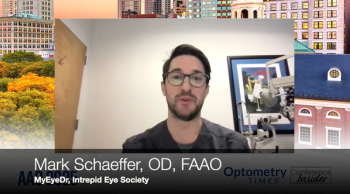
Getting a pulse on glaucoma management with Dr Angela Wen
Wen, OD, gives an overview of the glaucoma landscape, from necessary technology and management options.
In an exclusive interview with Optometry Times, Angela Wen, OD, an optometrist practicing at NYU Langone Health, offers an insightful look into the contemporary landscape of glaucoma care, discussing key technologies, therapeutic approaches, professional growth strategies for optometrists, and the nuances of co-managing patients within a multidisciplinary setting.
The conversation begins with a focus on the indispensable tools used in glaucoma management. Wen emphatically identifies the humphrey field analyzer as a cornerstone technology in her practice. While acknowledging the utility of optical coherence tomography (OCT) in detecting structural eye changes, she stresses that the visual field test is especially valuable because OCT results can sometimes be misleading. The visual field test, therefore, plays a critical role in identifying both structural and functional vision loss, which is essential in accurately diagnosing and managing glaucoma patients.
When asked about the evolving role of eye drops in glaucoma therapy, Wen firmly asserted that, despite technological advancements and expanding treatment options such as laser and surgical interventions, eye drops remain a vital component of glaucoma care. She explained that the practicality and accessibility of drops are particularly important for patients in regions with limited access to advanced medical technologies, as well as for those who may be apprehensive about undergoing surgery. Further, she noted a trend among older patients who are accustomed to daily medications and therefore tend to adhere well to drop regimens. Even as new treatment modalities emerge, Wen forecasts that eye drops will remain fundamental, including for patients who have already undergone surgical procedures.
For general optometrists seeking a greater role in glaucoma management, Wen recommends cultivating collaborative relationships with glaucoma ophthalmologists and other specialists. She shares that, especially early in one’s career, learning from more experienced practitioners through these partnerships can make the challenge of managing complex glaucoma cases less daunting. Familiarity gained from such interactions builds both confidence and clinical competence, enabling ODs to better contribute to early glaucoma detection and ongoing care.
Wen also describes the spectrum of co-management in her day-to-day practice at NYU. Her caseload ranges from glaucoma suspects referred by other specialties to monitoring patients post-glaucoma surgery. The comanagement process is dynamic, sometimes involving alternating patient visits between herself and ophthalmologists and ensuring continual evaluation for disease stability or progression. She highlighted that not all cases result in surgical intervention; some patients require watchful monitoring, while others may present with conditions mimicking glaucoma. Wen’s experience underscores the importance of personalized care and teamwork in the successful long-term management of glaucoma patients.
Newsletter
Want more insights like this? Subscribe to Optometry Times and get clinical pearls and practice tips delivered straight to your inbox.




















































.png)


